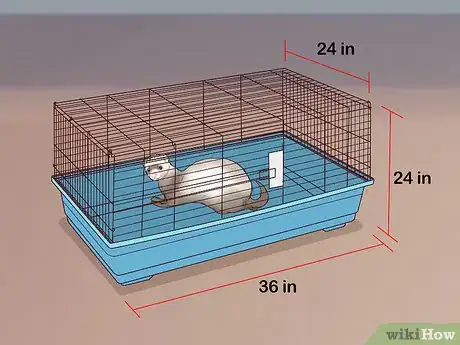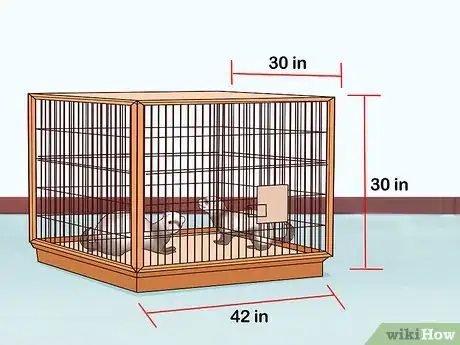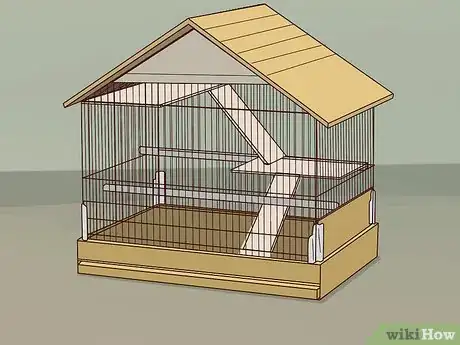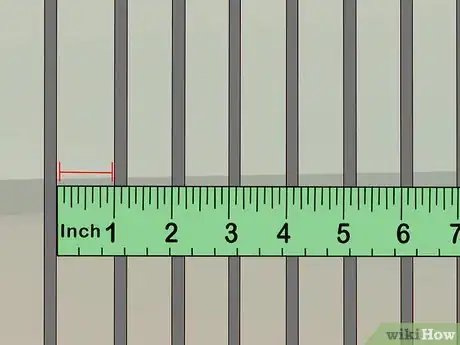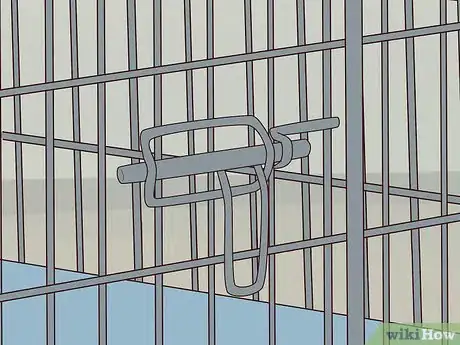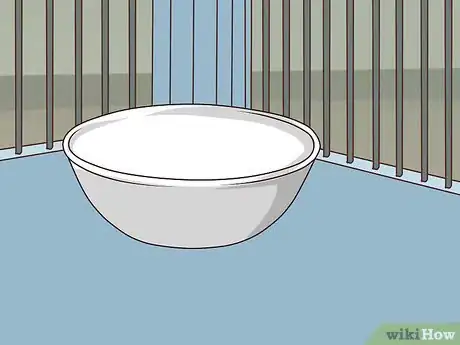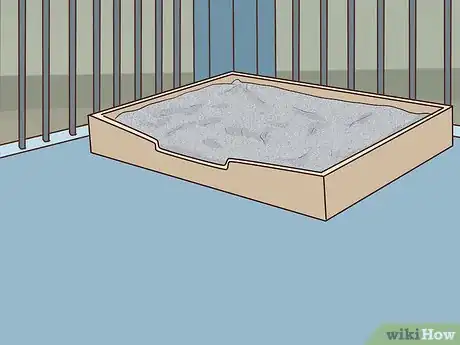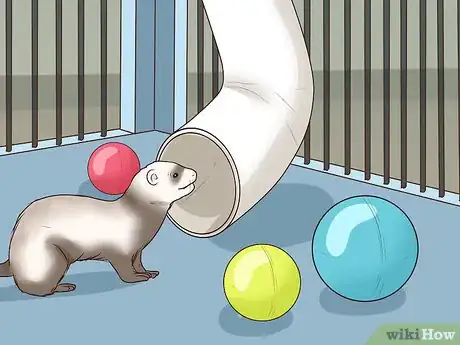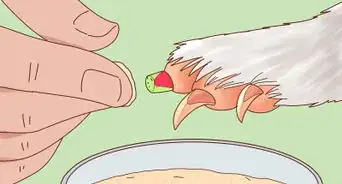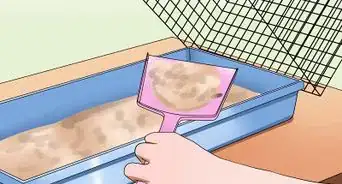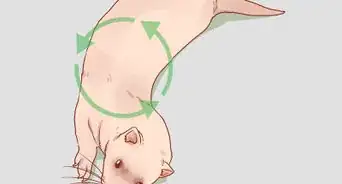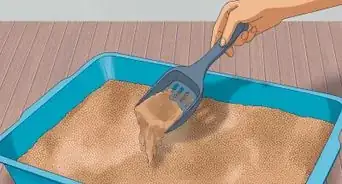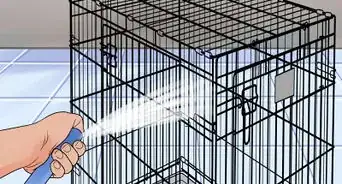This article was co-authored by Pippa Elliott, MRCVS. Dr. Elliott, BVMS, MRCVS is a veterinarian with over 30 years of experience in veterinary surgery and companion animal practice. She graduated from the University of Glasgow in 1987 with a degree in veterinary medicine and surgery. She has worked at the same animal clinic in her hometown for over 20 years.
This article has been viewed 71,622 times.
Ferrets are fun, intelligent animals with a playful, friendly personality. This makes them great pets for small animal lovers, but it can be hard to find the perfect cage for your new furry friend. Luckily, once you know your ferret’s needs, you can easily find a cage and add items like bedding, food, and water to give your pet the ideal home.
Steps
Choosing the Right Size
-
1Pick a cage that is 36 in (91 cm) wide and 24 in (61 cm) tall for 1 ferret. Select a cage that is at least 36 in (91 cm) wide, 24 in (61 cm) long, and 24 in (61 cm) tall for 1 ferret. There should be plenty of room for sleeping, eating, playing, and a litter box.[1]
- If your pet won’t have at least 4 hours per day to explore outside of the cage, consider picking a larger cage.
Warning: Avoid purchasing a painted or pressure-treated cage, which can contain toxins such as lead or zinc.
-
2Go with a significantly larger cage if you plan to keep multiple ferrets. A single-ferret cage won't be large enough for 2 or more ferrets, so if you plan to have more than 1 ferret, choose a larger cage that can comfortably house them. For each additional ferret, add 6 in (15 cm) of space to the single-ferret cage dimensions.
- For example, if you plan to have 2 ferrets, get a cage that's at least 42 inches (110 cm) wide, 30 inches (76 cm) long, and 30 inches (76 cm) tall.
Advertisement -
3Get a cage with multiple levels to provide stimulation and mobility. A suitable ferret cage should have 2-3 different levels. Make sure there are ramps positioned between the levels so your ferret can run and play throughout the cage easily.[2]
- For 2 or more ferrets, plan to have at least 4 levels for them to sleep, eat, and play on.
Picking a Secure Enclosure
-
1Make sure the bars are spaced less than 1 inch (2.5 cm) apart. Ferrets are sneaky and will try to get out of the cage. Measure the space between the bars to make sure it is smaller than 1 inch (2.5 cm), which should keep even a young ferret safely inside.[3]
- If you’re afraid your ferret might escape, you can wrap chicken wire around the outside of the cage.
-
2Check the strength of the latches to keep your ferret from escaping. Make sure the door to the cage has a locking mechanism since ferrets can easily push or pull open doors that aren’t latched. Each door should have a strong locking latch, and you can reinforce the doors with binder clips if necessary.[4]
- If your ferret manages to get past the latches, try adding extra locks to the doors. Some people use binder clips or clamps to hold the doors in place to prevent tampering.
-
3Select a cage that has a solid floor to protect the ferret's feet. Look for cages that have solid pans, pads, or carpeting along the flat surfaces, rather than wire floors. Ferrets have very delicate feet that can easily get trapped between wires, resulting in broken limbs or cuts. If you have to use a cage with wire flooring, cover the floor with a piece of carpeting, padding, or another flat item to make the cage safe.[5]
- If you’re having trouble finding pieces of carpeting, you may be able to get samples from a carpeting store. Normally, these are the perfect size for covering the bottom of the cage.
Filling the Cage with Toys and Necessities
-
1Place a heavy bowl on one of the levels to hold food. Pick a ceramic bowl or choose a bowl that locks onto the side of the cage. Ferrets will sometimes try to move or play with their food bowls by climbing into them or pushing them around the cage. A heavy or locking food bowl will keep your ferret safe.[6]
- Most pet stores and online retailers carry special food bowls for ferrets that have a combination of locks on them. Additionally, these bowls are normally quite heavy to prevent ferrets from pushing them around.
-
2Secure 2 water bottles to the side of the cage so your ferret can drink. Ferrets can drink a lot when they’re active, so it’s important to have a variety of sources of fresh water. Place a water bottle on each level of the cage so the ferret always has access to water, even if one of the bottles runs out. Change the water in the bottles every 2 days, even if the bottles aren’t empty.[7]
Tip: Place a small, locking bowl under the water spout to catch any drips since ferrets usually like to play with their water bottles.
-
3Provide a litter pan to collect waste in one of the corners of the cage. Opt for a litter pan that locks to the side of the cage, and pour in a paper-based or wood-based litter. Make sure the litter is around 1 inch (2.5 cm) deep, and place the ferret in the litter box so it knows where it is located. If you have more than 1 ferret, make sure you get an additional litter box since ferrets can be territorial![8]
- Avoid using scented or dusty litters since that can cause respiratory problems for your ferret.
- Don’t use clumping litter since it could block the ferret’s gut if it’s eaten.
- Remember to clean the litter box daily to ensure that your pet is happy and to prevent smells.
-
4Add a few pieces of clothing or a blanket to the cage for bedding. In the winter, provide heavier, warmer items, like old sweatshirts or fleece blankets for the ferret to sleep in. In the summer, replace these with old T-shirts or a regular ferret bed to keep your pet cool and refreshed.[9]
- You can also find hammocks and special ferret bolster beds online, which some ferrets really enjoy. However, all ferrets are different, and some animals won’t use these items. Try switching up the options in the cage to see what your pet likes.
-
5Provide hard plastic toys for the ferret to play with in the cage. Since your ferret will be inside of the cage for long periods of time, it will definitely need something to play with. Opt for hard, plastic balls, sturdy noisemakers, and plastic tubes for running and sliding. Avoid giving your pet anything that can easily be chewed through or pulled apart.[10]
- You can normally find a variety of ferret and small animal toys at the pet store. Be sure to inspect the toy closely to make sure there aren’t any parts that could fall off or could easily be chewed off.
Expert Q&A
-
QuestionWill a small dog cage be alright for only one ferret?
 Pippa Elliott, MRCVSDr. Elliott, BVMS, MRCVS is a veterinarian with over 30 years of experience in veterinary surgery and companion animal practice. She graduated from the University of Glasgow in 1987 with a degree in veterinary medicine and surgery. She has worked at the same animal clinic in her hometown for over 20 years.
Pippa Elliott, MRCVSDr. Elliott, BVMS, MRCVS is a veterinarian with over 30 years of experience in veterinary surgery and companion animal practice. She graduated from the University of Glasgow in 1987 with a degree in veterinary medicine and surgery. She has worked at the same animal clinic in her hometown for over 20 years.
Veterinarian The best thing is to quickly measure your dog cage and compare it to the size recommended in the article. A small dog crate should be okay, but make sure the base is solid and the ferret can't squeeze out between the bars.
The best thing is to quickly measure your dog cage and compare it to the size recommended in the article. A small dog crate should be okay, but make sure the base is solid and the ferret can't squeeze out between the bars. -
QuestionTook advice to keep two ferrets on one level until they consistently go potty in litter box. Wondering how long I should keep them on one level before allowing them on another.
 Pippa Elliott, MRCVSDr. Elliott, BVMS, MRCVS is a veterinarian with over 30 years of experience in veterinary surgery and companion animal practice. She graduated from the University of Glasgow in 1987 with a degree in veterinary medicine and surgery. She has worked at the same animal clinic in her hometown for over 20 years.
Pippa Elliott, MRCVSDr. Elliott, BVMS, MRCVS is a veterinarian with over 30 years of experience in veterinary surgery and companion animal practice. She graduated from the University of Glasgow in 1987 with a degree in veterinary medicine and surgery. She has worked at the same animal clinic in her hometown for over 20 years.
Veterinarian The idea is for them to get into the habit of always using the box, so keep this arrangement for at least a couple of weeks. Then gradually open up one level at a time for them to explore, but be sure of their way back to the litter pan.
The idea is for them to get into the habit of always using the box, so keep this arrangement for at least a couple of weeks. Then gradually open up one level at a time for them to explore, but be sure of their way back to the litter pan.
References
- ↑ https://petferretcare.net/cage-habitat/
- ↑ https://www.ferret.org/pdfs/education/cages.pdf
- ↑ https://www.aaha.org/pet_owner/pet_health_library/other/general_health/ferret_care.aspx
- ↑ https://petferretcare.net/cage-habitat/
- ↑ https://www.ferret.org/pdfs/education/cages.pdf
- ↑ https://www.ferret.org/pdfs/education/cages.pdf
- ↑ http://www.cypresskeep.com/Ferretfiles/Water-FM.htm
- ↑ https://www.ferret.org/pdfs/education/cages.pdf
- ↑ https://petferretcare.net/cage-habitat/
About This Article
To choose the best cage for a ferret, opt for one that’s at least 36 inches wide, 24 inches long, and 24 inches tall. If you have more than 1 ferret, add 6 inches to each of those dimensions. Choose a cage with 2-3 levels so the ferret can run and play, and make sure the bars are spaced no more than 1 inch apart. Also, opt for a cage with a solid floor, since wire floors can damage a ferret’s feet and legs. For tips from our Veterinary co-author on how to furnish the ferret’s cage, read on!
